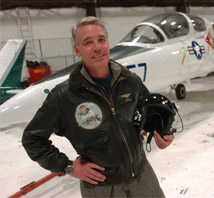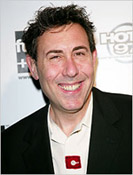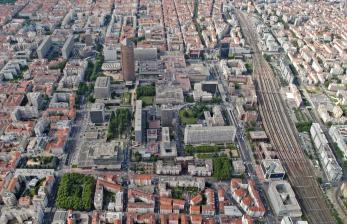Travel Tips for the Plutocracy

Jeff Marshall avoids onerous airport security by commuting in his own Soviet fighter jet.
While Thomas Frank argues on today’s New York Times’ op/ed page that America’s current "orgy of plunder and predation" is a mirror image of 19th century political corruption, the business section offers a fantastic package of travel tips for the frequent fliers that 1896 presidential candidate William Jennings Bryan would surely have called the "Plutocracy."
First, consider venture capitalist Jeff Marshall’s "unusual mode of transportation."
Mr. Marshall owns and flies a Soviet L-39 attack fighter jet, which burns through nearly 200 gallons of fuel per hour while in the air. Mr. Marshall, who works in Stamford, Conn., uses the jet to take family trips on Martha’s Vineyard, Mass., and Vermont, but has also used it to commute two days a week to Boston, "blowing past stalled traffic on Interstate 95 below," according to the Time.
 But how to make sure you don’t look rumpled after squeezing yourself out of the cockpit? Court TV’s Marc Juris has some tips:
But how to make sure you don’t look rumpled after squeezing yourself out of the cockpit? Court TV’s Marc Juris has some tips:
Often, on longer business trips, I send all of my bags by FedEx. That way, I have clean, pressed clothes waiting at my destination. And when it comes to my carry-on suitcase, I make sure it’s always stocked with clean clothes. I’ll even ship a duplicate bag with easy-to-replace but bulky items like running shoes and toiletries to my hotel. When I’m done with one, I just leave it at the hotel and take the bag with clean items to my next stop. No point carrying around a lot of dirty laundry.
For those who can not yet afford their own jet fighter but don’t want their bottle of Evian seized by security, there is always the flight-by-hour option:
Last week’s disruptions gave a sharp boost to a smaller but fast-growing segment of the private jet market — a niche for customers who purchase time cards that allow them to fly a certain model of jet by the hour. Jet cards often sell in hourly rates ranging from around $4,000 for five-seat light jets to $9,800 an hour for 10-seat heavier jets, which can fly across the Atlantic nonstop.
And for commercial fliers it seems "Business Class" will soon mean a separate plane, not just a separate section:
Once it begins service, Silverjet will be the third all-business-class airline to begin service in the last year or so on the lucrative New York-London route. The trans-Atlantic market, Mr. Hunt said over breakfast recently, is ready to be shaken up because business and leisure travelers feel they have been shaken down by established airlines. "The business and leisure consumer flying in business class is being ripped off because they’re paying 10 times what they would pay in coach class," he said.
Meanwhile, back in coach…
Flight attendants, whose profession was once considered glamorous, may have one of the toughest jobs in the airline industry these days. Planes are packed fuller than they have been in decades, there are fewer perks to provide comfort and distraction for passengers, and flight attendants have seen their pay and benefits cut at many airlines. And now travelers are increasingly confused and agitated about the new restrictions and the long lines to get through security.
